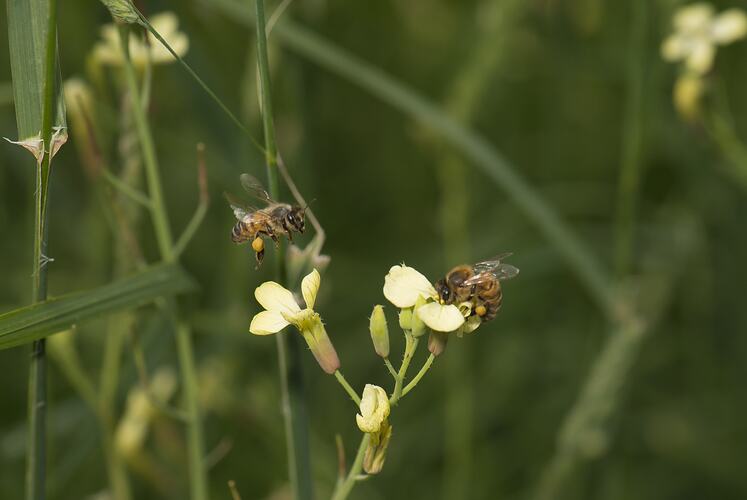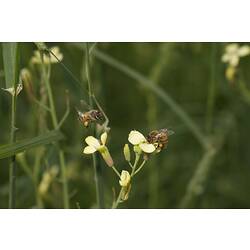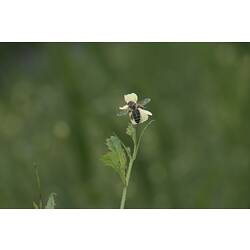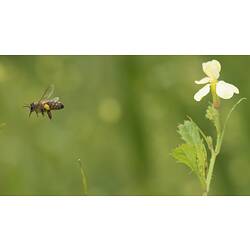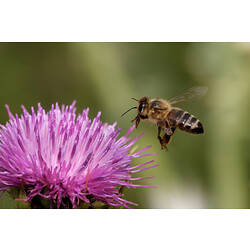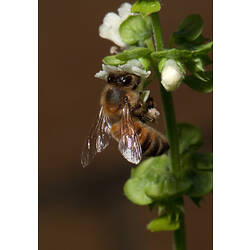General Description
Body with wide black and orange stripes. Hair on the eyes. Body up to 2 cm long.
Biology
Honey Bees live in communities: sterile female workers tend to the queen, larvae and pupae, and build, maintain and defend the hive. They collect nectar with long tongues. Unlike most Australian bees, they carry their pollen in specialised hairless pollen baskets (corbicula) on their hind legs rather than in haired areas. They are the only stinging insect that leaves its sting in the wound.
Distribution
Worldwide. Mainland Australia and Tasmania.
Habitat
Flying or on vegetation.
More Information
-
Animal Type
-
Animal SubType
-
Brief Id
Black and orange stripes across the body.
-
Colours
Black, Orange
-
Habitats
Wetland, Urban, DryForest, WetForest, Woodland, Mallee, Grassland
-
Diet
Nectar
-
Hazards
Painful sting, sometimes causing allergic reaction.
-
Endemicity
-
Commercial
Yes
-
Conservation Statuses
CITES: Not listed, FFG Threatened List: Not listed, DSE Advisory List: Not listed, IUCN Red List: Not listed
-
Taxon Name
-
Scientific Author
Linnaeus, 1758
-
Common Name
European Honey Bee
-
Kingdom
-
Phylum
-
Subphylum
-
Class
-
Order
-
Superfamily
-
Family
-
Subfamily
-
Genus
-
Subgenus
-
Species Name
mellifera
